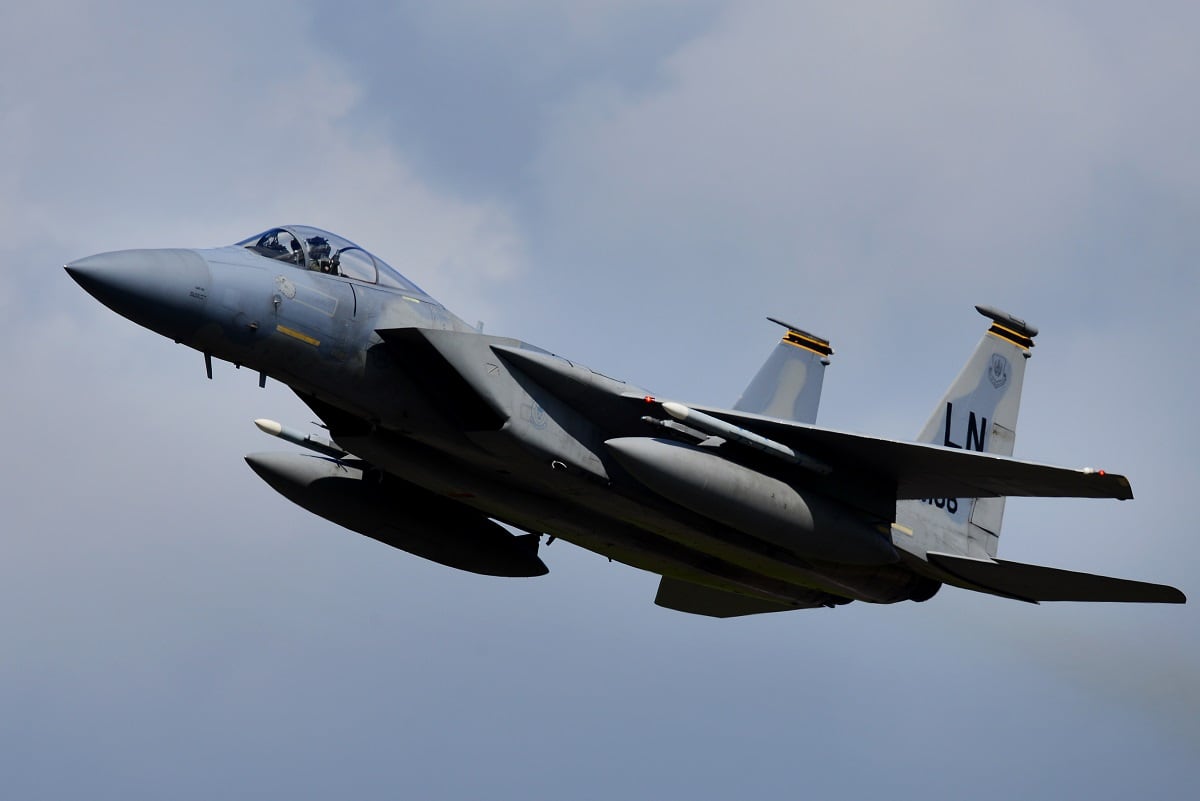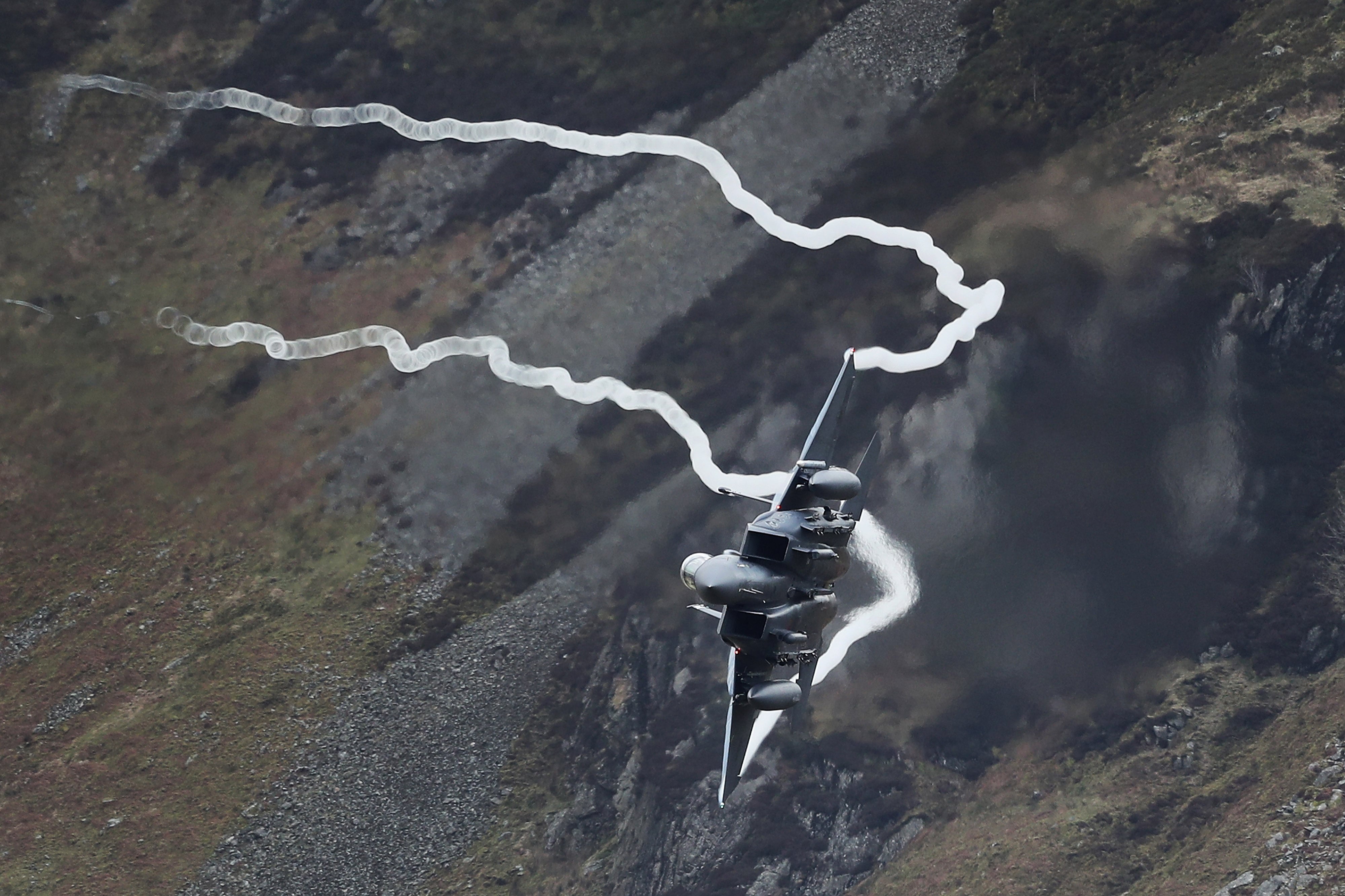The Air Force’s fleet of F-15 C and D Eagle fighters are aging faster than F-35 joint strike fighters are being fielded, a gap in the transition that some think needs to be filled. And even when more F-35s have been fielded, F-15s could still fill a tactical role to help the Air Force carry out its mission. Boeing’s new, single-seat F-15X design may be the Air Force’s answer to that issue.
Very little has been made known about the F-15X initiative, which was first reported by Defense One, and the Air Force’s Pentagon officials could not provide comment on it, only telling Air Force Times that “there is no acquisition program” with respect to the new platform.
But multiple media outlets still reported this week that the F-15X was being pitched to the Air Force by Boeing. Alternatively, some reports state that the Air Force first solicited Boeing for the new fighter. Regardless, the possibility of a new platform to replace aging the fourth-generation F-15 fighters could alleviate the strain put on F-22 Raptors and make up for the F-35s slow roll-out.
Created during the Cold War, the more than 40-year-old F-15 has been the U.S. Air Force’s primary air-to-air fighter jet for decades. The aircraft has been known for its range of operational roles, however, to include close-air support in the Global War on Terrorism.
Dan Grazier, the Jack Shanahan Military Fellow at the Project On Government Oversight, writes extensively on military procurement, to include the F-35 acquisition. He said that while he can’t comment on the specific designs of the F-15X, it is generally better to develop weapon systems from “an evolutionary approach.”

“Whenever the military possesses a proven basic design like the F-15, the Pentagon should focus its efforts on maintaining and improving it until the state of technology changes to the point where the basic design is no longer viable,” Grazier told Air Force Times. “Until that happens, there is no reason to continually reinvent the wheel. If it is possible to incorporate improved technology into a design that has already been bought and paid for, then it only makes financial and common sense to do so.”
RELATED

“There will doubtless be arguments made that the unit flyaway costs of the F-15X and F-35 will be roughly comparable," he said. "When you factor in the development costs of both into the program unit average cost, I bet the F-15X will be much less expensive.”
While the F-35 is a supposed to be a multi-role aircraft — capable of a stealth mode, as well as an air-to-ground combat mode once air dominance is achieved — it has been questioned whether the F-35 can outperform an F-15 in an air-to-air dogfight, or an A-10 Warthog in close-air support missions.
RELATED

As to what the F-15X includes that separates it from older F-15s, not too much is definitively known.
Citing sources close to the initiative, The War Zone reported the most extensive breakdown so far.
The F-15X reportedly came out of an Air Force inquiry to Boeing and Lockheed Martin about fielding an aircraft that could easily transition into the service’s existing air combat infrastructure, specifically to help counter the Air Force’s shrinking force.
There were some caveats to the solicitation: it needs to be cost-effective, low-risk and not considered an alternative to the larger F-35 procurement program, The War Zone reported. It seems those requirements were met, based on the reported features.
The F-15X armament would be designed for a mixed air-to-air and air-ground-role, including “eight air-to-air missiles and 28 Small Diameter Bombs (SDBs), or up to seven 2,000-pound bombs and eight air-to-air missiles," according to The War Zone.
The F-15X would allegedly be very affordable, as well. The aircraft reportedly costs roughly $27,000 per hour to fly. Meanwhile, the F-35A costs more than $40,000 an hour to fly, according to The War Zone.
Finally, The War Zone said the F-15X will have a 20,000-hour service life, meaning it could be flying for several more decades.
Still, Boeing officials have not outright confirmed they were pitching the F-15X.
“We see the marketplace expanding internationally and it’s creating opportunities then to go back and talk to the U.S. Air Force about what might be future upgrades or even potentially future acquisitions of the F-15 aircraft,” Gene Cunningham, vice president of global sales of Defense, Space & Security, told DefenseOne.
The Air Force has been considering retiring its F-15 Eagles for some time. In March 2016, service officials said they were considering a retirement for the more than 230 F-15 C and D fighters, and replacing them with F-16 Fighting Falcons.
Speaking before the Senate Armed Services air land forces subcommittee in April, Lt. Gen. Jerry Harris, the Air Force’s deputy chief of staff for strategic plans and requirements, said the service was still looking at options for the F-15 fleet.
“There’s nothing off the table,” Harris said. “We’re looking at, as we bring F-35s in, can we grow our capacity rather than just replace one-for-one? If we can’t do that, what’s our least-capable asset to retire, based on the value that it would provide for us?”
Kyle Rempfer was an editor and reporter who has covered combat operations, criminal cases, foreign military assistance and training accidents. Before entering journalism, Kyle served in U.S. Air Force Special Tactics and deployed in 2014 to Paktika Province, Afghanistan, and Baghdad, Iraq.








